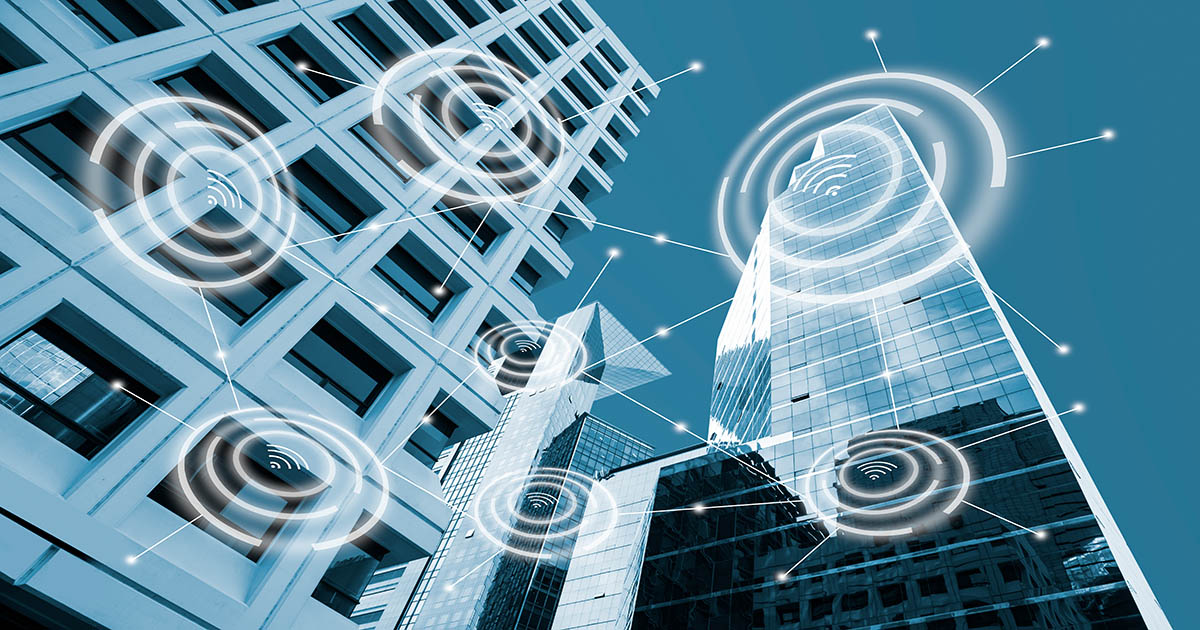Delivering Smarter Buildings

Congratulations to Marc Petock, recipient of the Realcomm|IBcon 2021 Lifetime Achievement Award!
The built environment continues to be transformed by the adoption of modern operating platforms for smart building management. Exciting advancements in connectivity technologies, advancing protocols, and the proliferation of data, help provide tangible outcomes to building owners and operators.
Delivering smart buildings, is not new.
It has been a topic of discussion for years. Delivering smart buildings, or at least the vision of one, originated in the early 1980s as seen from these excerpts from the New York Times:
-
“Cityplace a 38-floor building opening in Hartford. With 1.3 million square feet of floor space, it will be the largest commercial structure in Connecticut. It will also be ‘the world's first intelligent building'. Later next year, Building Systems, a subsidiary of the United Technologies Corporation, says, it will complete work on the first ‘intelligent’ buildings in New York City - Tower 49 - and in the Southwest - LTV Center in Dallas. And it is also installing sophisticated office complexes outside Washington, D.C., at Crystal City in Arlington, Va., and Skyline City in Alexandria, Va.”
The year was 1983.
And, from May 13, 1984:
- “Commercial developers are drawing on the talents of the communications industry to create a new generation of office buildings that seem to think for themselves. These new structures, only a handful of which now exist, are called intelligent buildings. An intelligent building has a computer for a brain and a fiber-optic-cable nerve system that tenants use for their telephone and data processing communications. The computer operates sensors that signal when spaces are too hot or cold, when lights have been left on at night and when intruders have gained entry to the building. It also operates the elevators and warns of fire and breakdowns in water and electrical systems.”
Back then, several major enabling technology trends were already under way. The telecommunications industry was undergoing deregulation and there was a host of new companies, products, services, and innovations that entered the marketplace.
Another was the emergence of the personal computer industry. This era also spawned the first real connection between commercial real estate developers, building owners and technology that could help operate and manage their buildings better.
Fast forward to today. What is pushing buildings to be smarter?
While there are several drivers, there are four that construct the foundation of smarter buildings.
Connectivity
Today, connectivity is enabling us to expand our reach to the edge with a range of devices that gather and analyze data and react to it in a variety of applications that we have never seen before.
It is allowing us to redistribute and process data independently at the device level.
It is enabling the flattening of the network architecture and giving us the ability to access and control remotely and direct connect to the Cloud.
Connectivity is also empowering us to create collaborative environments.
Data
Accessing and making use of data from existing operational systems is critical to making any building smarter.
Data has changed the way companies in every industry do business and assess and manage performance. We are in an era where data technologies and analytics enable us to capture data from diverse sources and make it consistent and meaningful, and using it across multiple applications.
Today’s increased access to data is empowering us to take advantage of it—from everywhere and any device. By effectively utilizing data, we create better operational and occupant experiences.
IP
IP-enabled edge devices are becoming a common element and more prevalent within buildings of all types.
IP-enabled devices take advantage of embedded connectivity and offer several benefits including making use of existing network infrastructures. They also require no special knowledge for installation, offer several connectivity options (fiber, wireless, VPN etc.) and bring agility, interoperability, speed, and adaptability that are expanding applications.
As a result, IP devices are redefining the structure of smart technology. They are also flattening the topology of traditional building controls architectures, thus creating a horizontal approach instead of a vertical one.
Outcomes
Over the years, we have seen continuing confusion around smart building outcomes.
Smarter buildings are not just about installing smart operating technology. Technology and the systems in buildings are simply enablers, or a means to an outcome. Smarter building outcomes are now about delivering solutions that solve owner/operator challenges and achieve their business, strategic, financial and marketability outcomes.
In conclusion, the quest for smarter buildings continues in its most transformative and compelling period we have seen over the last twenty-five years. It is more than just the products and technology solutions. It is an understanding of delivering insights and outcomes that make buildings smarter.
This Week’s Sponsor
Embracing open software/hardware platforms, Lynxspring develops, manufactures, distributes, and supports the edge-to-enterprise and IoT solutions that create smart buildings, smart equipment, and smart applications. Our technology provides connectivity, control, integration, interoperability, and data access, management, and analytics. Lynxspring’s solutions are deployed in millions of square feet of commercial settings in the United States and internationally. Visit www.lynxspring.com.
Read Next
 5/15/2025
5/15/2025
Tech, Talent and Transformation: 2025 Digie Finalists Announced For 27 years, Realcomm has presented the Digie Awards to acknowledge companies, real estate projects, technologies, and individuals that have advanced the commercial real estate industry through the strategic use of technology, automation, and innovation.
 5/15/2025
5/15/2025
Empowering Space Management with Data-Driven Visualization For effective CRE space management, it’s critical to centralize lease data, maximize rental square footage (RSF), improve energy efficiency and reconfigure spaces to meet changing needs.
 5/8/2025
5/8/2025
The AI-Powered Workplace Evolution: Redefining the Business Landscape In today's rapidly evolving business environment, the fusion of Artificial Intelligence (AI) and Workplace Management is revolutionizing the way organizations approach workspace optimization and operational efficiency.
 3/27/2025
3/27/2025
The Convergence of Edge Computing, Cloud, and AI in Building Automation and Smart Buildings In the built environment, we have seen the convergence of Operational Technology (OT) and Information Technology (IT), later expanding to include Workplace Technologies (WP).









%20(1)%20(1)%20(1).png)


